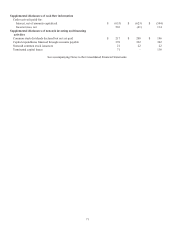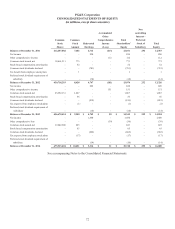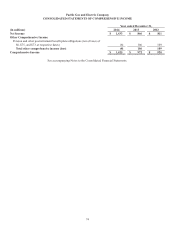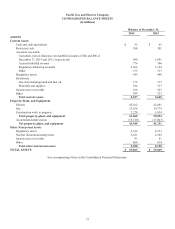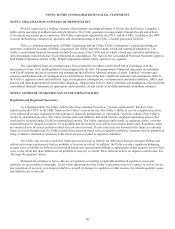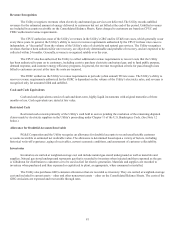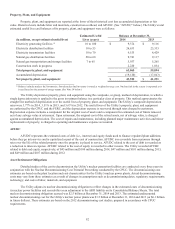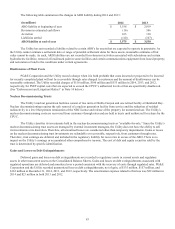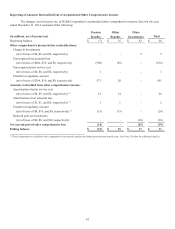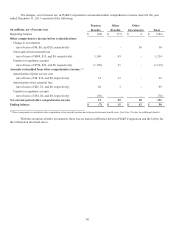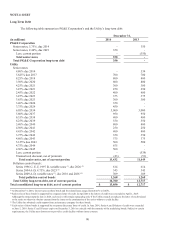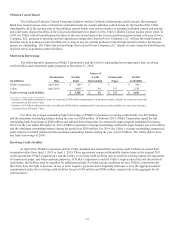PG&E 2014 Annual Report Download - page 89
Download and view the complete annual report
Please find page 89 of the 2014 PG&E annual report below. You can navigate through the pages in the report by either clicking on the pages listed below, or by using the keyword search tool below to find specific information within the annual report.81
Revenue Recognition
The Utility recognizes revenues when electricity and natural gas services are delivered. The Utility records unbilled
revenues for the estimated amount of energy delivered to customers but not yet billed at the end of the period. Unbilled revenues
are included in accounts receivable on the Consolidated Balance Sheets. Rates charged to customers are based on CPUC and
FERC authorized revenue requirements.
The CPUC authorizes most of the Utility’s revenues in the Utility’s GRC and its GT&S rate cases, which generally occur
every three years. In general, the Utility’s ability to recover revenue requirements authorized by the CPUC in these rates cases is
independent, or “decoupled” from the volume of the Utility’s sales of electricity and natural gas services. The Utility recognizes
revenues that have been authorized for rate recovery, are objectively determinable and probable of recovery, and are expected to be
collected within 24 months. Generally, revenue is recognized ratably over the year.
The CPUC also has authorized the Utility to collect additional revenue requirements to recover costs that the Utility
has been authorized to pass on to customers, including costs to purchase electricity and natural gas; and to fund public purpose,
demand response, and customer energy efficiency programs. In general, the revenue recognition criteria for pass-through costs
billed to customers are met at the time the costs are incurred.
The FERC authorizes the Utility’s revenue requirements in periodic (often annual) TO rate cases. The Utility’s ability to
recover revenue requirements authorized by the FERC is dependent on the volume of the Utility’s electricity sales, and revenue is
recognized only for amounts billed and unbilled.
Cash and Cash Equivalents
Cash and cash equivalents consist of cash and short-term, highly liquid investments with original maturities of three
months or less. Cash equivalents are stated at fair value.
Restricted Cash
Restricted cash consists primarily of the Utility’s cash held in escrow pending the resolution of the remaining disputed
claims made by electricity suppliers in the Utility’s proceeding under Chapter 11 of the U.S. Bankruptcy Code. (See Note 12
below.)
Allowance for Doubtful Accounts Receivable
PG&E Corporation and the Utility recognize an allowance for doubtful accounts to record uncollectable customer
accounts receivable at estimated net realizable value. The allowance is determined based upon a variety of factors, including
historical write-off experience, aging of receivables, current economic conditions, and assessment of customer collectability.
Inventories
Inventories are carried at weighted-average cost and include natural gas stored underground as well as materials and
supplies. Natural gas stored underground represents gas that is recorded to inventory when injected and then expensed as the gas
is withdrawn for distribution to customers or to be used as fuel for electric generation. Materials and supplies are recorded to
inventory when purchased and then expensed or capitalized to plant, as appropriate, when consumed or installed.
The Utility also purchases GHG emission allowances that are recorded as inventory. They are carried at weighted-average
cost and included in current assets – other and other noncurrent assets – other on the Consolidated Balance Sheets. The costs of the
GHG emissions are expensed and recoverable through rates.


